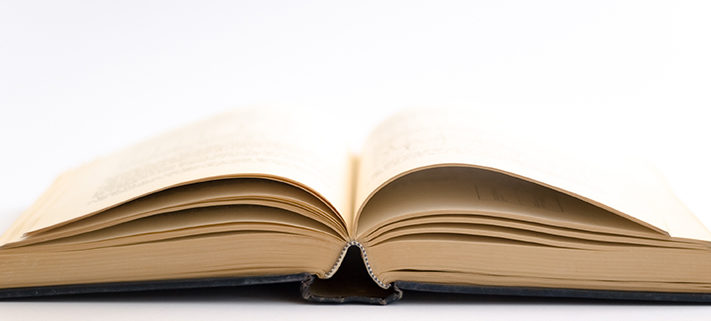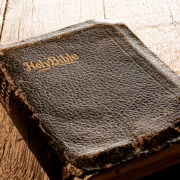Open your catechism
Luther’s Small Catechism still is important to us in today’s world.
John A. Braun
Where is yours? Your catechism? Mine is on the shelf, still sporting the tape I used to keep it together so many years ago. I guess you could say my old catechism is a memento of my confirmation. I haven’t looked at it in years, although, as you might expect, I have used different editions of the catechism over the years.
For many, the catechism might be little more than a memento still on the shelf or in a box somewhere. It might have been discarded or given to a younger brother or sister. Maybe the last time you thought about the catechism was when your kids were learning what you learned years ago.
Luther’s Small Catechism is the most widely known work of Martin Luther. Aside from some of Luther’s hymns, it’s also the most widely used, and it has been translated into almost as many languages as the Bible.
So why am I asking if you know where your catechism is? Luther suggests, “Many see the catechism as a poor, common teaching, which they can read through once and immediately understand. They can throw the book into a corner and be ashamed to read it again. . . . But for myself I say this . . . I act as a child who is being taught the catechism. . . . I must still read and study [it] daily. Yet I cannot master the catechism as I wish.”
He went on to encourage us all: “Catechism study is the most effective help against the devil, the world, the flesh, and all evil thoughts. It helps to be occupied with God’s Word, to speak it, and meditate on it, just as the first Psalm declares people blessed who meditate on God’s Law day and night” (Longer Preface to the Large Catechism).
So find your catechism. It’s a good place to start as we mark the 500th anniversary of the Reformation next year.
The need for written works
When Luther began preaching in Wittenberg already in 1516, his sermons often addressed the topics of the Ten Commandments, the Lord’s Prayer, and the Creed. Priests and monks had been using those topics long before Luther began his work in Wittenberg. But the clergy had taught people what they needed to do to gain heaven. At first Luther struggled with this approach, never knowing whether he had done enough.
Luther soon learned that no one, not even he, can do enough to get a pass into heaven. But his study of the Scriptures assured him that Jesus had done enough—not just for him but for all sinners. That brought him comfort and a stronger faith in Jesus.
After that, Luther had a deep passion to help laypeople understand the gospel he learned. Some of his sermons on the Ten Commandments, the Creed, and the Lord’s Prayer were among the works he published. In 1522 he also wrote a little book called Personal Prayer Book to help the “lowly Christian” understand the Ten Commandments, the Creed, and the Lord’s Prayer correctly. The little book, along with his other publications, helped spread the ideas of the Reformation.
Steps to printing the catechism
But a series of events caused Luther to take another step. In 1527, five years after first publishing Personal Prayer Book, the reformers in Saxony wanted to assess what people knew about their new faith. They visited the parishes in the territory and discovered a “deplorable, miserable condition.” Many had “no knowledge whatever of Christian doctrine. . . . Many pastors are completely unable and unqualified to teach” and most “cannot even recite the Lord’s Prayer or the Creed or the Ten Commandments. They live like dumb brutes and irrational hogs” (Preface of the Small Catechism).
What should be done? Luther continued to preach each year on the three topics and added sermons on Baptism, Absolution, and the Lord’s Supper. His colleagues worked on catechisms and instructional material, but finally Luther was convinced that he had to write a brief handbook of Christian doctrine. From the sermons he had preached he drew material for The Large Catechism, which was published in March 1529. In May 1529, he finished The Small Catechism for Ordinary Pastors and Preachers. Both books were written to help pastors of congregations teach the chief Christian doctrines to their laypeople. The Small Catechism was an immediate best seller.
Luther had large posters printed of the chief parts of the catechism for congregations to hang on the walls in their churches, schools, and homes so the people could recite them together. Remember that the catechism Luther wrote was small and was the chief parts we memorized and learned in confirmation class. Our catechisms today also contain an “Exposition of Luther’s Catechism,” a much longer section with explanations and Bible passages.
The catechism remains important
We still use Luther’s little book almost five hundred years after its first printing. Today when congregations call pastors, they require the pastor “to instruct our catechumens in the Word of God, as it is taught in the Small Catechism of Doctor Martin Luther” (Pastor Call Form). Luther’s Small Catechism has stood the test of time, and most of us can still recite some portions of it.
Why is it important? Luther described his goal in the foreword of his Personal Prayer Book. What he wrote also applies to the Small Catechism:
It is just like a sick person who first has to determine the nature of his sickness, then find out what to do or to leave undone. After that he has to know where to get the medicine which will help him do or leave undone what is right for a healthy person. Third, he has to desire to search for this medicine and to obtain it or have it brought to him. Luther’s Works, Vol. 43, p. 13
What does that mean to us? We are sick whether we realize it or not. Sin still infects all humans, including us, and makes us sick to death. We have a naturally sinful tendency to minimize our sins or to go about our daily lives thinking we can make ourselves spiritually healthy. The Ten Commandments force us to confront our failures and faults. They help us remember the nature of our sickness—sin. But they offer no real hope or healing. The only place to find the medicine to heal our hearts and lives is the gospel. The Creed reminds us what God has done and continues to do for us by grace. That’s the gospel and God’s powerful balm for sin. Once we find the gospel’s healing, we turn to the Lord in prayer—his prayer—seeking his grace for all our needs.
But this is not a single event in our lives. Again and again, yes, daily, we discover the infection of sin is not yet gone. So we review and repeat the process: Confess our sin, trust in the forgiveness, and humbly pray for God’s mercy and grace. That’s why we should review the catechism regularly.
Assignment: Find your catechism.
John Braun, chairman of the Reformation 500 committee, is the executive editor of Forward in Christ.
This is the first article in a six-part series on Luther’s Small Catechism. John Braun is leading an interactive Bible study on this topic each Wednesday Sept. 21 through Oct. 26 at 6 and 8 p.m. CDT. Learn more at wels.net/interactivefaith.
SUBMIT YOUR STORY
Do you have a manuscript, idea, or story from your own life you’d like to share for use in Forward in Christ or on wels.net? Use our online form to share it to our editorial office for consideration.
SUBSCRIBE TO FORWARD IN CHRIST
Get inspirational stories, spiritual help, and synod news from Forward in Christ every month. Print and digital subscriptions are available from Northwestern Publishing House.
Author: John A. Braun
Volume 103, Number 10
Issue: October 2016
Copyrighted by WELS Forward in Christ © 2021
Forward in Christ grants permission for any original article (not a reprint) to be printed for use in a WELS church, school, or organization, provided that it is distributed free and indicate Forward in Christ as the source. Images may not be reproduced except in the context of its article. Contact us





